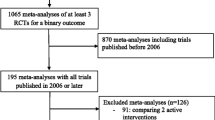Abstract
Studies evaluating average treatment effects (ATE) of an intervention could broadly be classified into those with observational and randomized designs. Observational studies are limited by confounding, in addition to selection and information bias, making the evaluation of ATE hypothesis generating and not hypothesis testing. Randomization attempts to reduce the systemic error introduced by observational studies by ensuring equal distribution of prognostic factors between the treatment and control groups, thereby confirming that any difference in outcomes observed between the two groups is attributable to the treatment. While randomized controlled trials (RCT) remain the gold standard in estimating ATE of therapeutic interventions, they do have inherent limitations due to uncertain external validity. Observational studies can have a complementary role in enhancing RCTs’ ability to inform routine clinical practice. In this review, we focus on the limitations of observational studies, the need for randomization, interpretation, and the limitations of RCTs.
Similar content being viewed by others
References
CONSENSUS Trial Study Group. Effects of enalapril on mortality in severe congestive heart failure. Results of the Cooperative North Scandinavian Enalapril Survival Study (CONSENSUS). N Engl J Med. 1987;316:1429–35.
Packer M, Anker SD, Butler J, et al. Cardiovascular and renal outcomes with empagliflozin in heart failure. N Engl J Med. 2020;383:1413–24.
Cleland JGF, Daubert J-C, Erdmann E, et al. The effect of cardiac resynchronization on morbidity and mortality in heart failure. N Engl J Med. 2005;352:1539–49.
McMurray JJV, Packer M, Desai AS, et al. Angiotensin-neprilysin inhibition versus enalapril in heart failure. N Engl J Med. 2014;371:993–1004.
Packer M, Bristow MR, Cohn JN, et al. The effect of carvedilol on morbidity and mortality in patients with chronic heart failure. U.S. Carvedilol Heart Failure Study Group. N Engl J Med. 1996;334:1349–55.
Mauri L, Silbaugh TS, Garg P, et al. Drug-eluting or bare-metal stents for acute myocardial infarction. N Engl J Med. 2008;359:1330–42.
Kastrati A, Dibra A, Spaulding C, et al. Meta-analysis of randomized trials on drug-eluting stents vs. bare-metal stents in patients with acute myocardial infarction. Eur Heart J. 2007;28:2706–13.
Feinberg J, Nielsen EE, Greenhalgh J, et al. Drug-eluting stents versus bare-metal stents for acute coronary syndrome. Cochrane Database Syst Rev. 2017;8:CD012481.
Wong BYL. Drug-eluting versus bare-metal stents in acute myocardial infarction. N Engl J Med. 2009;360:300.
Grimes DA, Schulz KF. Bias and causal associations in observational research. Lancet. 2002;359:248–52.
Sackett DL. Bias in analytic research. J Chronic Dis. 1979;32:51–63.
Rosenberger WF, Uschner D, Wang Y. Randomization: the forgotten component of the randomized clinical trial. Stat Med. 2019;38:1–12.
Baggerly K. Experimental design, randomization, and validation. Clin Chem. 2018;64:1534–5.
Wallentin L, Becker RC, Budaj A, et al. Ticagrelor versus clopidogrel in patients with acute coronary syndromes. N Engl J Med. 2009;361:1045–57.
Ruwald ACH, Westergaard B, Sehestedt T, et al. Losartan versus atenolol-based antihypertensive treatment reduces cardiovascular events especially well in elderly patients: the Losartan Intervention For Endpoint reduction in hypertension (LIFE) study. J Hypertens. 2012;30:1252–9.
Pitt B, Pfeffer MA, Assmann SF, et al. Spironolactone for heart failure with preserved ejection fraction. N Engl J Med. 2014;370:1383–92.
Raz I, Wilson PWF, Strojek K, et al. Effects of prandial versus fasting glycemia on cardiovascular outcomes in type 2 diabetes: the HEART2D trial. Diabetes Care. 2009;32:381–6.
Boden WE, O’Rourke RA, Teo KK, et al. Optimal medical therapy with or without PCI for stable coronary disease. N Engl J Med. 2007;356:1503–16.
Fröbert O, Lagerqvist B, Olivecrona GK, et al. Thrombus aspiration during ST-segment elevation myocardial infarction. N Engl J Med. 2013;369:1587–97.
Bønaa KH, Mannsverk J, Wiseth R, et al. Drug-eluting or bare-metal stents for coronary artery disease. N Engl J Med. 2016;375:1242–52.
Funding
None.
Author information
Authors and Affiliations
Corresponding author
Ethics declarations
Ethics approval
Not applicable as this is a review.
Informed consent
Not applicable.
Human and animal rights
Not applicable.
Conflict of interest
The authors declare no competing interests.
Additional information
Publisher's note
Springer Nature remains neutral with regard to jurisdictional claims in published maps and institutional affiliations.
Rights and permissions
About this article
Cite this article
Sundaram, V., Selvaganesan, P., Deo, S. et al. The importance of randomization in clinical research. Indian J Thorac Cardiovasc Surg 38, 562–565 (2022). https://doi.org/10.1007/s12055-022-01401-7
Received:
Revised:
Accepted:
Published:
Issue Date:
DOI: https://doi.org/10.1007/s12055-022-01401-7




